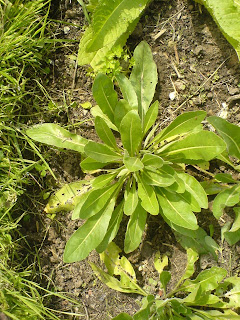Wensleydale Yays: long lustrous fibres
lustre brings out the colours beautifully
takes up the dye magnificently
highly local to me (bought this fleece at Masham Sheep Fair)
hard wearing fibre, yet soft and silky (good for socks...)
is an incredibly beautiful fibre, with it's long curly locks...
Wensleydale Boo: Prep! Actually this is not all bad, BUT it takes a long long long time to do.
Prepping Wensleydale: You must wash it carefully, and slowly. It kind of matts often anyway before you even get it off the sheep. Natty dreds indeed. Be GENTLE.
Dye it really slowly and gently (see above..)
And then there is the fibre prepping bit... Wensleydale is too long for a drumcarder OR conventional carders. It will wrap right around your drumcarder and cause you much to curse about, like a bent awl. Those gorgeous fibres can be over a foot long...They also need to be teased apart (hand picked) anyway, before any more prepping can be done. If you wish a textured yarn, maybe with some gorgeous curls pointing out, just do this much prep, and have lots of fun spinning it. If, however, you wish to spin for socks for your husband's birthday, you need to open those locks further, so you can spin a lovely straight yarn...
I flicked the locks open with a small carder, although many spinners use "flick carders" for this task. More like "combing" the fibres, half on and half off the carder. DON'T fold the fibre (unless you want difficult to draft lumps). It is a far remove from making a rolag, you are just aligning the fibres in a roughly parallel way, and getting rid of any snarls and knots you can.
I took this long and involved process as a chance to play around with blending the colours of some of my plant dyed Wensleydale fibres. I chose a slightly limited palatte, in the blue, yellow, brown spectrum (hmmn, don't normally use "brown" and "spectrum" in the same sentence, but it's a metaphor. I am a dye poet...). I thought "combine as many colours as I can get away with for a manly sock...". Greens and oranges and greys sneaked in. I had a great time with colour, trying out colour blends I wouldn't normally.
Something that seems to be important to me when blending colours in a multi hued arrangement is to have "quieter" areas - greys, paler colours, and "louder" ones with more saturated and intense colours. It works like an abstract painting: how you place the colours and their tones together in the piece gives the eye places to rest and reflect, and places where it is having a visual adventure. ( I know this seems like a lot for a couple of humble socks, but honestly, these things MATTER to me...(sort of) if you're gonna do it, do it the right way for you....) Ofcourse it is a debatable point whether or not a visual adventure is also a soul adventure, but I know where I stand on that discussion.
After much prepping, the fibres were spun up and chain plied back on them selves. I didn't, after all that careful blending and ordering, want the colours to be muddied by careless (some might say "random") plying, as might occur in a 2 or 3 ply. It has to be 3 ply. We are talking socks, here. A chain ply does, ofcourse, give you a faux 3 ply with TOTAL colour control.
What else? Oh, colours: Blue: woad, home grown, fermented in the wee hot box. (see other blogs).
Many browns/oranges/rusts, these from eucalyptus, madder over some brown shetland, purple onion skins.
golden tans: plain onion skins. Greens from birch leaves + alum over dyed with woad. A bluey gray from woad. Mustard yellow... er, can't remember...rhubarb root? Sure lots of other things sneaked in, too.
Some of the brown sections are so complex and delicious, that these photos just don't do it justice.....
I am officially jealous of my husband for owning these socks. He did say " They're too nice to wear" for the first few days after his birthday. But he has succumbed to the full tactile/visual experience now, and they are regularly seen on his feet.




































